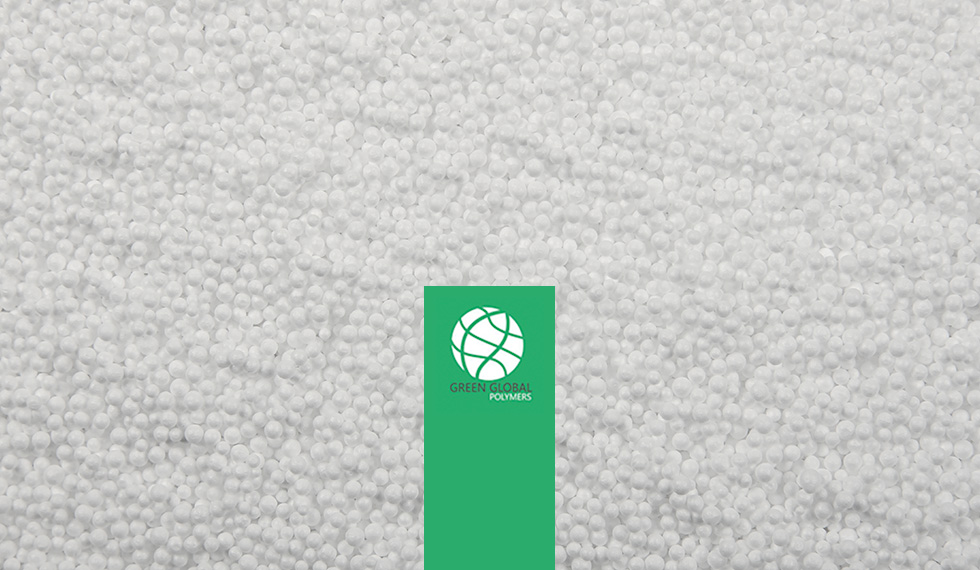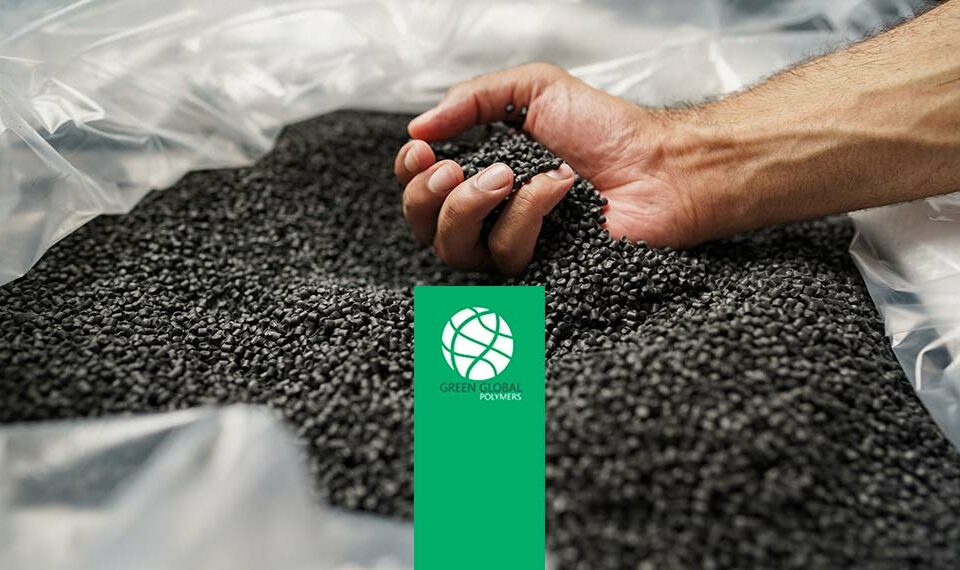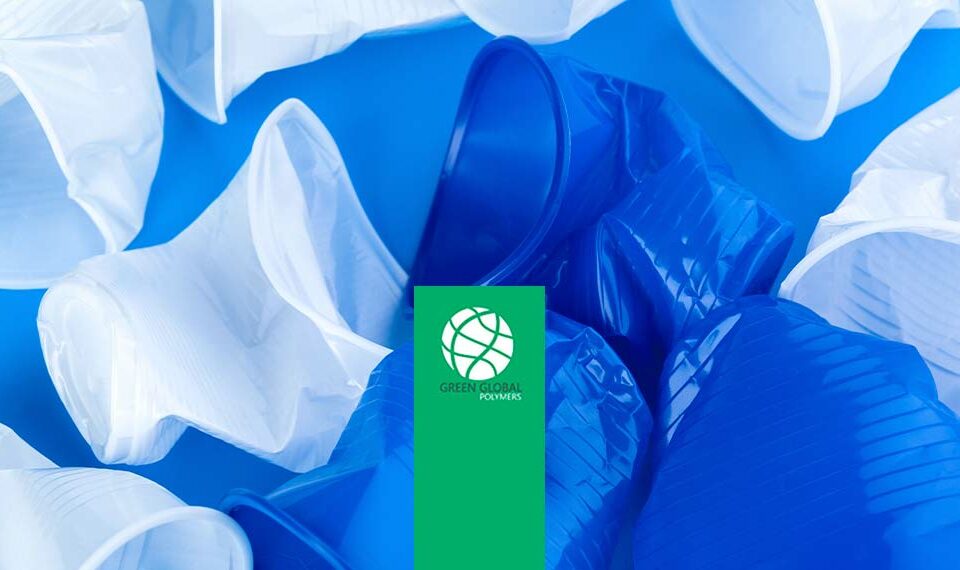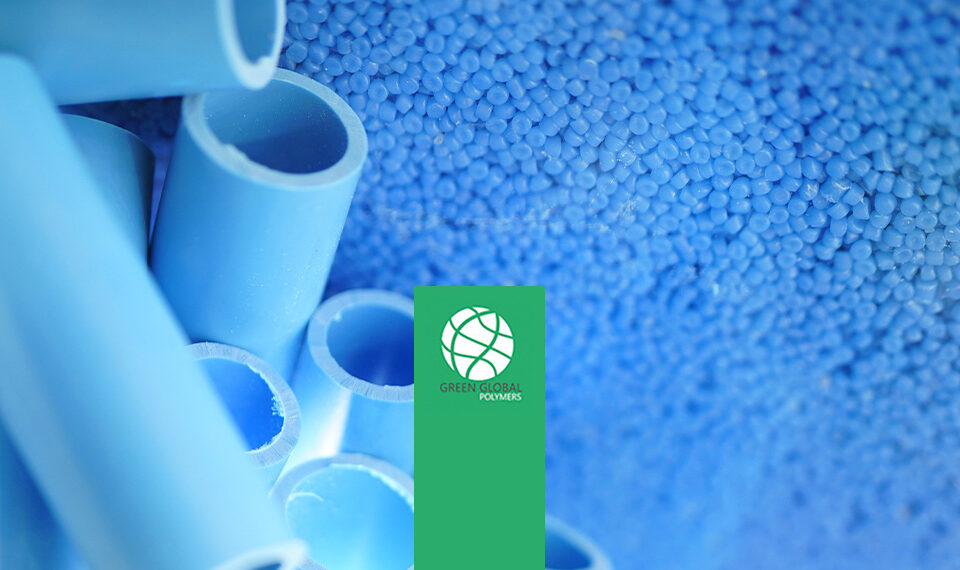Poliestireno reciclado

En GREEN GLOBAL POLYMERS creemos firmemente en el poder de la economía circular y en el potencial de darle una nueva vida al plástico. Entre los materiales que reciclamos, el poliestireno reciclado ocupa un lugar destacado por su versatilidad y amplio uso en diversas industrias. Este plástico, conocido también como PS, es fundamental en nuestra labor de recuperación de recursos, que llevamos a cabo con un enfoque innovador y sostenible.
El reciclaje de poliestireno no solo reduce los residuos plásticos, sino que también juega un papel crucial en la conservación de recursos naturales y en la lucha contra el cambio climático. Desde nuestra planta en Ribarroja del Túria, Valencia, operamos con tecnología avanzada para recuperar este material y transformarlo en granzas y triturado. Esto permite que el poliestireno reciclado se reutilice en nuevos productos, cerrando así el ciclo de vida del plástico y evitando que termine en vertederos o incineradoras.
¿Qué es el Poliestireno y sus tipos?
El poliestireno (PS) es un polímero termoplástico obtenido mediante la polimerización del estireno monómero. Es reconocido por ser un material económico, resistente y de gran utilidad en múltiples sectores. Gracias a su amplia gama de aplicaciones, se posiciona como el cuarto plástico más consumido a nivel global, solo superado por el polietileno, el polipropileno y el PVC.
Existen diferentes tipos de poliestireno, cada uno diseñado para satisfacer necesidades específicas:
- Poliestireno cristal: Es un material transparente, duro y frágil, ideal para aplicaciones donde la claridad visual es importante.
- Poliestireno de alto impacto (HIPS): Con una gran resistencia a golpes y deformaciones, es perfecto para productos como carcasas de electrodomésticos y juguetes.
- Poliestireno expandido (EPS): Comúnmente conocido como corcho blanco, se utiliza como aislante térmico y en embalajes.
- Poliestireno extruido (XPS): Similar al EPS pero con mayor densidad, es ideal para aplicaciones en la construcción.
- Poliestireno reciclado: Producto del proceso de recuperación y transformación, que ofrece una alternativa sostenible y de alta calidad.
Proceso de reciclaje del Poliestireno
El reciclaje de poliestireno es un proceso meticuloso y altamente técnico que requiere equipos especializados y un compromiso con la calidad. En GREEN GLOBAL POLYMERS, nuestro proceso comienza con la recuperación de residuos plásticos provenientes de contenedores amarillos o industrias que desean dar una segunda vida a este material.
Etapas del proceso de reciclaje del Poliestireno
- Recolección y clasificación: Los residuos de poliestireno son recolectados y clasificados según su tipo y grado de contaminación. Este paso es crucial para garantizar un reciclaje eficiente.
- Lavado y triturado: En nuestra línea de recuperación, los plásticos son lavados para eliminar impurezas y luego triturados en partículas más pequeñas.
- Extrusión y peletización: El material triturado se funde y se convierte en granzas de plástico, listas para ser utilizadas en la fabricación de nuevos productos.
- Control de calidad: Realizamos un exhaustivo análisis para asegurar que el poliestireno reciclado cumple con los estándares necesarios para su reutilización en aplicaciones industriales.
Gracias a este proceso, logramos obtener dos productos principales: plástico triturado y granzas, ambos con una calidad excepcional y una huella ambiental significativamente reducida.
Aplicaciones del Poliestireno reciclado
El poliestireno reciclado es un recurso valioso para numerosas industrias, que encuentran en este material una alternativa sostenible y versátil. Algunas de sus aplicaciones más comunes incluyen:
- Construcción: Como aislante térmico y acústico en paneles y estructuras.
- Embalaje: Fabricación de envases y protectores para transporte de productos frágiles.
- Electrónica: Carcasas de electrodomésticos y dispositivos electrónicos.
- Automoción: Piezas moldeadas para interiores de vehículos.
- Utensilios domésticos: Vasos, platos, cubiertos y otros artículos desechables.
En GREEN GLOBAL POLYMERS, estamos orgullosos de ser un puente entre los residuos plásticos y las nuevas oportunidades industriales, fomentando el uso de poliestireno reciclado como una solución eficiente y respetuosa con el medio ambiente.
Beneficios del reciclaje de Poliestireno
El reciclaje de poliestireno tiene múltiples beneficios, no solo para las empresas que lo utilizan, sino también para el medio ambiente y la sociedad en general. Entre ellos, destacamos:
- Reducción de residuos: Cada tonelada de poliestireno reciclado evita que grandes cantidades de plástico acaben en vertederos o en el océano.
- Ahorro de recursos naturales: Al reciclar, disminuye la necesidad de extraer petróleo para producir nuevos plásticos.
- Disminución de la huella de carbono: La fabricación de productos a partir de plástico reciclado genera menos emisiones de CO₂ en comparación con el uso de materiales vírgenes.
- Economía circular: Fomenta un modelo de producción más sostenible, donde los materiales se reutilizan en lugar de desecharse.
El papel de GREEN GLOBAL POLYMERS en la sostenibilidad
Con más de 30 años de experiencia, en GREEN GLOBAL POLYMERS nos hemos consolidado como líderes en el reciclaje y la comercialización de plásticos, incluyendo el poliestireno reciclado. Nuestro compromiso con un mundo más verde se refleja en cada etapa de nuestro trabajo, desde la recuperación de residuos hasta la entrega de productos de alta calidad.
Desde nuestra planta en Valencia, contribuimos activamente a la preservación del medio ambiente, transformando desechos en recursos que impulsan la economía circular. Cada granza o triturado que producimos representa un paso hacia un futuro más limpio y sostenible.
Perspectivas futuras para el poliestireno reciclado
El futuro del poliestireno reciclado es prometedor. Con el creciente interés en la sostenibilidad y las regulaciones cada vez más estrictas sobre el manejo de residuos plásticos, este material se posiciona como una solución clave para múltiples industrias. En GREEN GLOBAL POLYMERS, estamos constantemente innovando para mejorar nuestros procesos y adaptarnos a las demandas del mercado.
A medida que más empresas y consumidores adoptan prácticas responsables, esperamos que el reciclaje de poliestireno alcance nuevos niveles, convirtiéndose en una práctica estándar en todo el mundo.
Poliestireno reciclado
El reciclaje de poliestireno es una actividad esencial para combatir la contaminación plástica y construir un futuro sostenible. En GREEN GLOBAL POLYMERS, nos sentimos orgullosos de liderar este esfuerzo, ofreciendo soluciones avanzadas y sostenibles que benefician tanto al medio ambiente como a las industrias que confían en nosotros.
Si deseas contribuir al cambio y aprovechar las ventajas del poliestireno reciclado, ¡contacta con nosotros! Juntos podemos transformar residuos en recursos y crear un mundo más verde y limpio.



